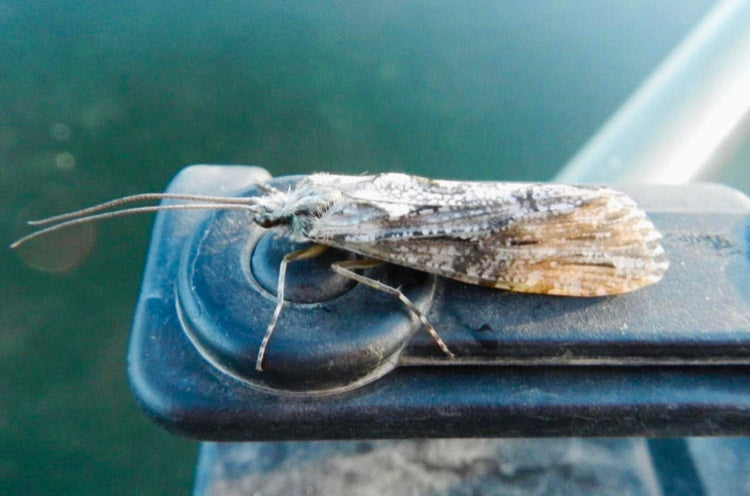
Summer comes fast, as the vivid wildflowers carpet the mountains in bloom. The sky blazes blue and the sun is a celebration of gold. Trees hover above as they don their best verdant, green hues, and the river banks are adorned with tall blades of grass. The river is alive with caddis in the air skating, jerking, and bouncing of the water surface. The river boils with a feeding frenzy of many trout snouts seen breaking the water surface eager for the feast.
Caddis is one of the most bountiful sources of food for the trout. They are a part of the Trichoptera group of insects of hairy wings in ancient Greek. They are prevalent in rivers, creeks, lakes, and streams. Trout feast on them from larva stage up to the adult stage of their life cycle. Caddis have a complete metamorphosis with three life stages: the larva, pupa, and the adult.
Caddis Larva
Caddis larva resemble a small grub, and they are very susceptible at this stage. They develop through five instars as an aquatic larva. At the end of the larval stage, the caddis will seal itself in a casing retreat to undergo the development changes of two to three weeks. They produce a safe, protective case out of silk and debris usually from leaves, sand, gravel, and sticks. Caddis will remain and dwell in this stage generally a year. When it is time to pupate, they will secure off their case. This is dependent upon the optimal time of day and water temperatures to emerge.

Caddis Pupa
At the end of the larval stage, most caddis flies clamp their casings to solid objects on the bottom of a river or stream. During the pupa stage of its metamorphosis, the developing structure encasement pulls away from the larval skin and assumes the pupa shape. The mature insect inside the skin controls its own functions of muscle movement, legs, and mandible. It will cut its way out of the casing and swim or crawl to the surface while still in its transparent pupa cloak.
As the pupa reaches metamorphosis, it will nibble through the exterior casing to create an opening. Until it extricates itself completely from the casing, it cannot create air bubbles. When they separate free from their casing, the caddis will fill the casing with a gas pocket. The air bubbles in the casing add buoyancy.
Caddis will transport in the current before beginning the ascent with their oar-shaped legs. Their movement to reach the surface is a rowing stop and go swimming motion. The caddis will linger when it reaches the surface and struggle to escape its own shuck. It will push through the pupa meniscus skin it will wiggle free and take off for flight, as a winged adult.
Caddis Adult
The adult caddis will flutter and move about before departing the surface of the water. Once out of the silk pupa meniscus, most caddis flies will fly off hastily. Many adults may skate across the water instead of take off. Of course, it is a threat for survival with birds in the air and the ravenous trout below the water surface.

The adult caddis have a resembling appearance like a moth. Their tent shaped wings lay flat against their bodies. They will fly around erratically sometimes for days seeking a mate. Adult caddis flies huddle in dark and moist hiding places until ready to mate. One can witness the large swarms of caddis during the cooling hours of the evening. After mating, the female caddis will land on the water surface, or swim to the bottom to lay eggs. After laying their eggs, they die shortly. Most caddis species have a one-year life cycle. Species vary with an median of three weeks in the egg stage, nine to ten months as larvae, two to five weeks as pupae, and two to five weeks as an adult.

Some females may survive and lay eggs a few more cycles of reproduction before dying. Many caddis are swept away and drown while others are partaken by the fish. The dead and dying caddis are robust in their presence during egg laying, making this last stage an significant food source for the trout.
During a caddis hatch, many fishermen often will get overzealous to catch fish on the dry. The trout are more likely focused on the middle water column and the caddis emergent stage. Be wise as to how to fish the life cycle of the caddis hatch this will help increase the chances of a successful day on the water. See you on the river!

